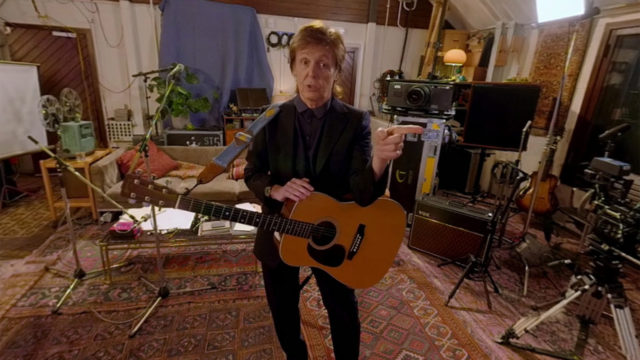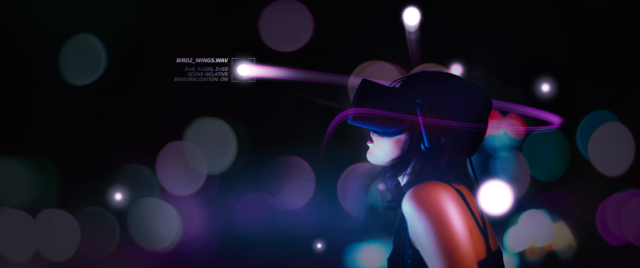Dolby unlocked a new dimension of immersive audio with Atmos surround sound early last year by allowing content creators to design and deliver cutting-edge linear VR experiences through using spatial audio in a 3D space.
The emotive experience is designed to captivate consumers with pin-point precision so that they can feel they’re inside the compelling stories they’re placed in.
Doing so requires the right mix of both realism and hyper-realism, which is why the traditional movie company is dedicated to dispense object-based architecture that will provide creators storytelling freedom and flexibility—with a focus on accentuating audio.
One such way was by partnering with Littlstar in August, a network dedicated to VR and 360-degree video, where users simply install the Littlstar app and run it on supported playback devices with a VR head-mounted display to view such content as Paranormal Activity: The Ghost Dimension 360, Rapid Fire: A Brief History of Flight and Bob’s Burgers 360—Dancin’.
“By being among the first to incorporate Dolby Atmos into a global VR content network for distribution, consumers, as well as studios, brands and content owners using Littlstar will have access to the best VR-optimized spatial audio in the industry,” said Tony Mugavero, founder and CEO of Littlstar.

Dolby Atmos also partnered with Jaunt in July, the Palo Alto-based movie studio that produces short cinematics VR pieces, with a portal that houses experiences like a private home recording studio session with Paul McCartney and performances by musician Jack White.
Joel Susal, Dolby’s director of virtual and augmented reality, who’s responsible for the company’s entry into and ongoing business within the space, joined [a]listdaily to discuss how sound is critical to guiding users through VR stories.
What is Dolby Atmos’ mission, and what is it set out to accomplish?
We’re focused on enhancing the science of sight and sound. VR is the perfect example of how our technology comes together to make meaningful experiences for consumers. One way that happens is that you have to have great artists that really understand the medium, and that have the right set of tools in front of them to create compelling experiences. If you think about cinema or TV, like baseball, when you see and hear the crack of the bat hitting the ball, I’d say 100 percent of the time, that sound is actually accentuated. That’s what enables someone to tell a better story. So one of the ideas behind VR, kind of the first cut, is people think ‘I want to feel like I’m there.’ All of that comes with having the right set of technologies in the hands of the right people. For us, it’s the Dolby Atmos, which debuted in 2012 in cinema, and is now used in over two-thirds of the world’s top-grossing films and is embraced by Hollywood as the best storytelling technology.
How are you using Dolby Atmos to deliver cutting-edge linear VR experiences?
We’ve taken these tools and technologies and applied it to use in VR. Here’s why it’s important: Dolby Atmos is object-based, which means you can place sounds anywhere around you with pin-point precision. That’s important in VR because if the sounds aren’t where you expect them to be, the whole illusion falls apart. Beyond just precision, content creators want flexibility. They want to define how far away an audio source should be. Because Atmos is object-based, we can define on a per-object basis, whether a sound is head-relative, or scene-relative. Dolby Atmos is also massively scalable, and it can be streamed over normal networks to a playback device. In addition to the stream, our playback solution provides the same experience across all devices we support. This way content creators know exactly what the consumer is going to hear. So, they have that level of assurance that what they’re creating is what people are going to experience.
How important is sound to VR?
Often times the discussion is trying to convince people that they need immersive audio. In VR, I’d say that’s actually a pretty easy step to take because anyone who has watched a VR video, they just can’t tell. They might be hearing something, but if they don’t know where, or if they have to search for where every sound is coming from, that’s just distracting. They’ve lost the story. I think there’s a lot of exploration. We have taken our content creation tools, and they’re in beta now with over 40 partners, and from what we’re seeing and hearing form those partners, we’re starting to see the beginnings of what really the audio experience needs to be in VR. The importance of that is as we continue to uncover the needs of VR audio, we’re able to introduce those features in our creation suite. It’s commonplace knowledge now that having immersive audio in VR is not a luxury, it’s a necessity.

How realistic is it for us to be having VR experiences in theaters?
It’s not tomorrow—just because I still think there’s a lot of exploration happening in VR. Certainly from a tech perspective, we’re there, and ready to provide what we would call ‘a true cinematic VR experience.’ What’s interesting about watching a movie in a shared space like a theater is if it’s a linear piece of content like a movie, concert or sporting event, you can have multiple people wearing goggles in the same space, as long as their video is synchronized. You can surround all of those people with the same set of speakers and wherever one person decides to look, the audio is going to be exactly as it should be. If someone decides to look elsewhere, the audio is going to be exactly as it should be because they’re all surrounded by the same sound source because they can choose where to look. The idea of surrounding a community with synchronized video, but one set of immersive speakers, really paves the way for these communal viewing experiences. This enables a local and social VR experience where you can actually get excited together.
How is Dolby’s VR division leveraging the overall brand equity?
Our brand is really a pillar of strength. I’ll give an example with music experiences in VR. Musicians know that their product is an audio one. While a lot of them are excited about VR and experimenting in this new medium, they’re clearly not very interested in experimenting in how their product sounds. They’re willing to take the leap into VR, but they don’t want to risk degrading what their product sounds like. So, not only having a brand, but the quality and technology that Dolby brings, has been resonating strongly with musicians. What we’ve seen from the community, the content creation community and the VR distribution community is a real affinity and preference for our experience. The best thing we can do is leverage the brand but also deposit brand equity into Dolby brand, and I think we’re doing that.
How are you utilizing your partnerships with Jaunt and Littlstar?
Jaunt is one of our key partners, as they have plenty of content available in Dolby Atmos. Littlstar will be supporting Dolby Atmos. What we’re trying to emphasize right now is that because we have this end-to-end solution, when someone starts using our production tools and utilizes these new features, when that piece of content is played back on a partner’s service, those features are utilized from day one—compared to having to wait for the content distributor to implement these advanced features. What we provide is much faster time-to-market as these new features become uncovered and we introduce them in our end-to-end solution. Our content creation tools for post-produced linear VR are in beta right now. We’re looking for the best content creators to join that beta program. We’ll be rolling that out soon to the public. When using those tools, if you distribute your piece of art to one of our partners like Jaunt or Littlstar, and there are more on the way, that full Atmos experience immediately gets conveyed to consumers and that’s really when the best experiences are rendered. We’re excited about being on the cusp of this new technology and we’re really excited to be leading and listening to what the people want so that we can help drive it even further forward.
Follow Manouk Akopyan on Twitter @Manouk_Akopyan

